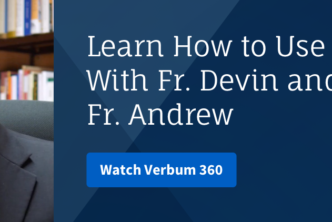Calculating the liturgical calendar is a somewhat complex affair. The General Roman Calendar is basically made up of a calendar of Sundays and weekdays calculated relative to Christmas and Easter, an overlapping calendar of saints’ feasts that land on fixed dates, and a system for determining what to do when occasions coincide.
What is today? Well, that depends on the day of the week, how far we are from Easter, and how far we are from Christmas. Also, do we celebrate anyone’s feast day today? Is it a memorial, feast, or solemnity? Simple enough, but, oh, is Epiphany shifted to Sunday where you live? If so, did that Sunday land on January 7 or 8? . . .
The algorithm for forecasting the calendar can thus get rather complicated. We’ve just shipped an update to the lectionary (available in all base packages) to better account for a few of the more obscure wrinkles that you might not have known about.
Sliding Solemnities
The rules of precedence dictate that nothing outranks Holy Week, Easter Week, and the Sundays of Lent, Advent, and Easter. But the feast days that the Church ranks as Solemnities are important enough that rather than just skipping them when they get trumped, we move them to the closest available day.
The foremost example of this is the Solemnity of the Annunciation. Most years, the Annunciation is celebrated on March 25, but sometimes, when Easter is on the early side, March 25 lands within Holy Week or Easter Week. When this happens, as it does this year, the Annunciation is shifted to the Monday after the Second Sunday of Easter. (Note that it’s possible that this placement isn’t just a coincidence. It was a common belief that the Lord was conceived and died on the same day of the year. See The Spirit of the Liturgy, page 105ff.)
When Easter is very early, the Solemnity of St. Joseph can be bumped as well. This last occurred in 2008, when the Church decided that, unlike the Annunciation, St. Joseph would be shifted backward to the Saturday before Holy Week. This won’t happen again until 2035.
The feasts of the Immaculate Conception of Mary and (more rarely) the Birth of John the Baptist can also be affected thus. Assuming that the Church continues to handle these consistently and doesn’t change up the rules as she did in 2008, we can accurately predict them into the future.
St. Andrew the Biannual
The feast of St. Andrew can fall either before or after the First Sunday of Advent. Consequently, it has the curious property of being able to occur more than once in a single liturgical year. For instance, it occurred on the Wednesday after the First Sunday of Advent in 2011, and again on the Friday before the First Sunday of Advent of 2012. Unfortunately, last year we didn’t realize our algorithm hadn’t accounted for this possibility until it was too late. This is now corrected for 2012 and will be correct the next time this occurs in 2016–2017.
Caveat Lector
With these corrections, I believe that our lectionary resource accounts for all predictable occurrences in the general calendar, and for the adaptations found in the current US lectionary (though we’ll continue to proof it against the annual calendar issued by the USCCB). Where the US adaptation differs from the general calendar, both are given as options. There remain, of course, things like local variations and options that we can’t account for, so clergy and others preparing for the public celebration of the liturgy would always be wise to consult the ordo and official liturgical text for their territory, diocese, or religious order.
Other Lectionary Improvements
While we were improving our handling of the calendar, we corrected user-reported typos and added a couple of other minor enhancements to the linking within the lectionary as well. First, when there is more than one option for the day, we’ve added a link below the heading to make this more visible. Second, in the list of readings at the top, we’ve added links to the headings that take you down to the text of the reading below. This should make figuring out all the options for the day and navigating around the readings a bit easier.
These are all mostly minor improvements, but enhancing our liturgical resources and getting the data right is a top priority for the development of Verbum—a necessary foundation for deeper integration of the Church’s liturgical use of Scripture into the tools and features of the software.







Are there any plans to add aids for the non-US, English speaking world? I am from England. I know there are key differences between our Bishops Conferences and so need to use an offline lectionary for my locale.
Also, whilst I am fond of the RSVCE, it would be perfect if the Jerusalem translation (not New Jerusalem) with Grail Psalms and removal of the Divine Name were available so that I could look up the exact reading from the Lectionary all within Verbum. (This has been done in the new CTS Bible)
Very interesting information! Thank you for constantly adding quality and value to this amazing resource!